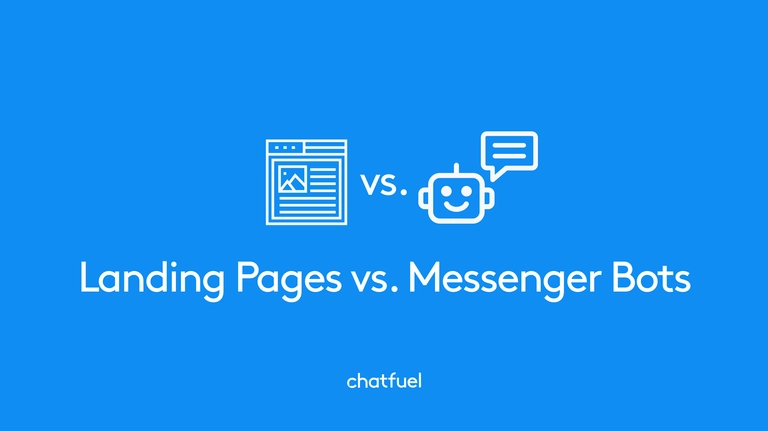
How to choose between chatbots and landing pages for your business’s Facebook ads
Decide between a landing page or a chatbot as the destination for your business's Facebook ads.
You’ve created an engaging Facebook ad for your business, complete with great visuals, intriguing copy, and precise targeting. The question is: Where will prospects go once they engage with it? The next step is crucial in actually achieving conversions and earning revenue for your brand.
Landing pages are the traditional option, and they still have their place. However, the Facebook Messenger chatbot has emerged as a compelling new alternative for a variety of industries and use cases. To decide between landing page vs. chatbot for your business, consider the features and benefits of each.
What is a landing page?
A landing page is a web page that a user is directed to, or “lands” on, after clicking on a Facebook ad. It commonly includes more details about the product or service mentioned in the ad, and is designed to get the user to take a specific action—like opting in or making a purchase.
Landing pages typically include a form where the user can enter their information. They’re sometimes incentivized to fill out the form with a free download, discount, or other type of lead magnet. If they do so, they’ll be counted as a conversion. Then, they’ll either receive information or a digital product in their email, will be shipped a product, or will be contacted by the business later.
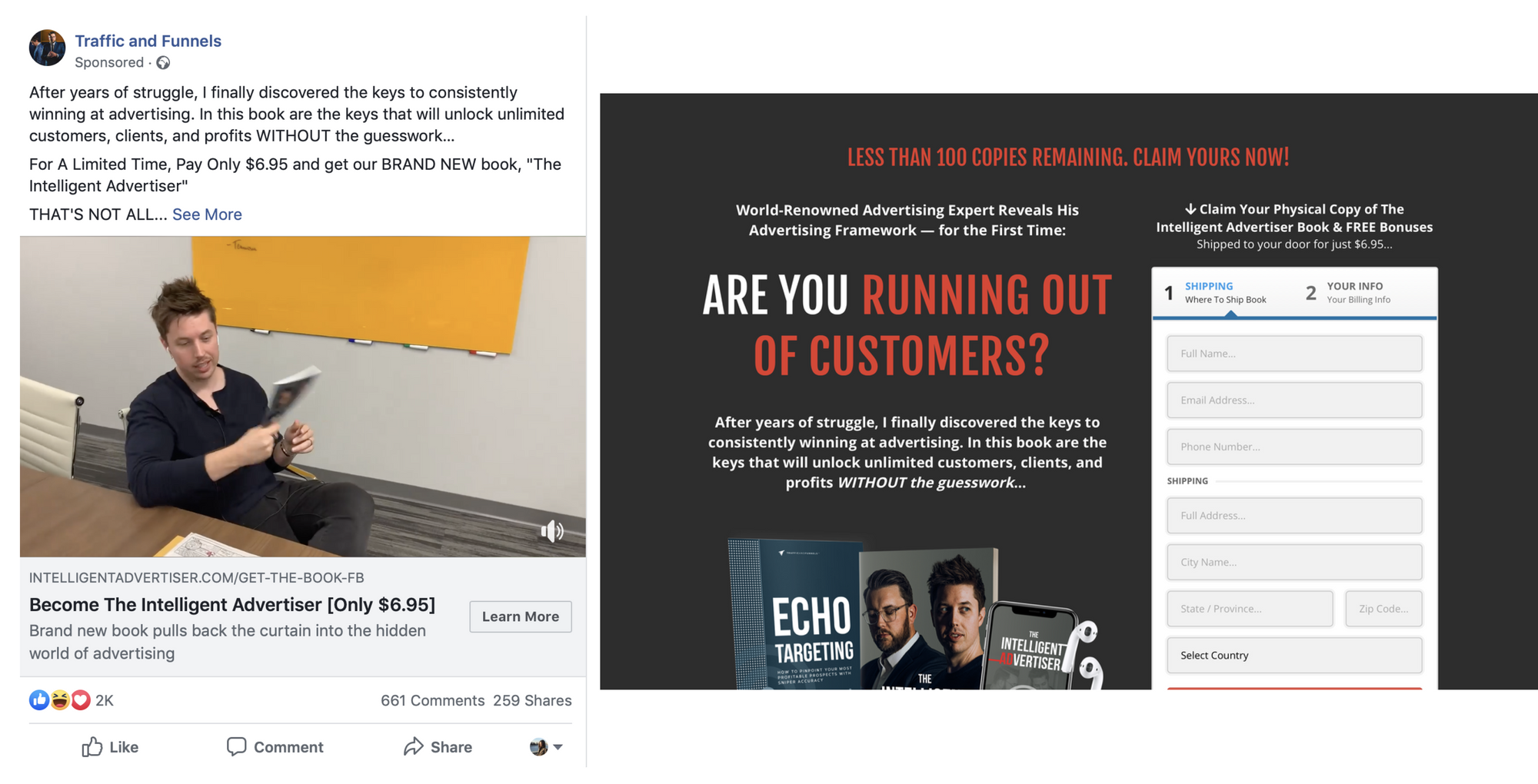
The advantages of landing pages for Facebook ads
When a user clicks on a Facebook ad, a landing page in a separate window is where they’re traditionally sent. While landing pages are no longer the only option, they can be effective when used correctly. A few of their benefits include:
Landing pages are extremely customizable. A new landing page is a blank slate. It can include as much information as you like in any arrangement or format, so a user can learn everything they need to know about your offer.
Landing pages tend to convert qualified traffic. A landing-page form with several fields to fill in can be intimidating to a user. In general, the more information you ask for, the fewer submissions you’ll receive overall. However, the users you do convert are likely to be warm leads more valuable to your business, as a longer form will tend to weed out unqualified traffic.
Landing pages can help with SEO. It depends on the content of your landing page, but some can help with your website’s search-engine rankings. If the page you designed includes long-form, useful content on a certain topic, you may be able to gain some SEO benefits from it.
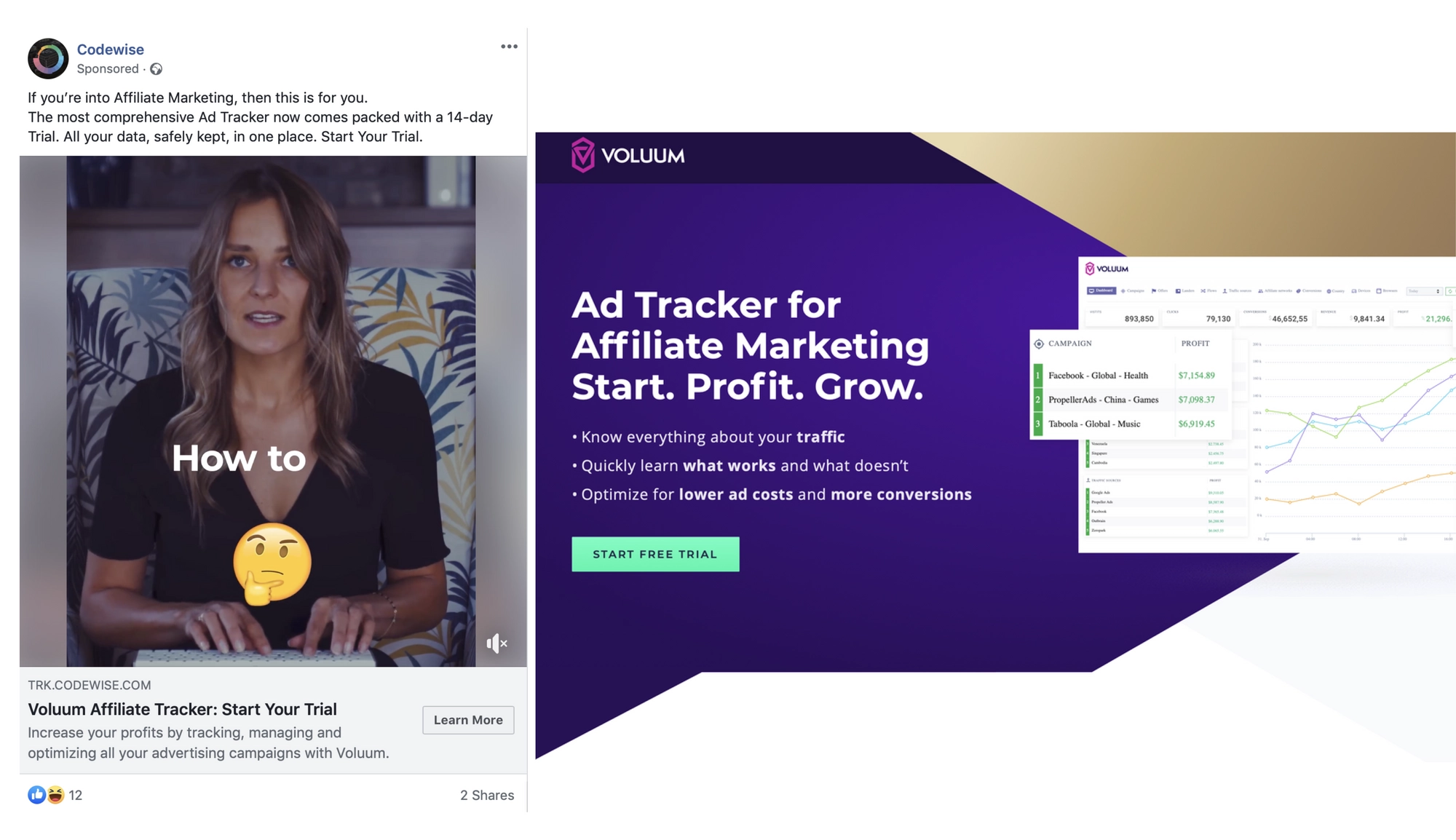
What is a Facebook Messenger bot?
A bot is a piece of software that can interact with customers or prospects in a conversational way via a chat platform like Facebook Messenger. You can equip your chatbot to answer specific questions or complete certain actions based on what users ask of them. They act as friendly virtual assistants that provide a guided, engaging experience. They’re easy and pleasant to interact with because they offer help and information in a humanlike way: in bite-sized pieces, message by message.
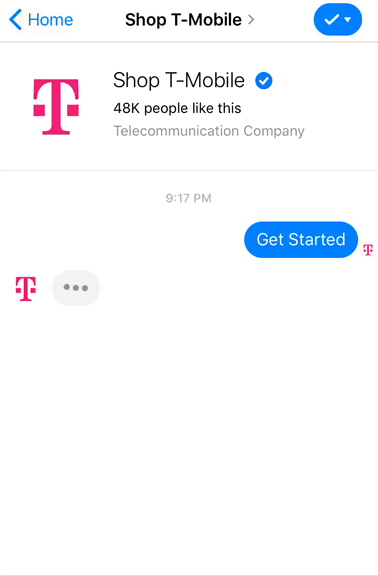
You can connect a Facebook ad to a chatbot. That way, when prospects click on your ad, they can simply be redirected to your bot in Messenger instead of to a landing page. From there, the bot can do everything from answering FAQs and making product recommendations to accepting sale payments or event sign-ups — and the user won’t have to leave the Messenger app.
Plus, it’s all done in an instant, conversational style that’s proven to promote high engagement and retention rates. Finally, if the bot runs into an issue or question that it doesn’t know how to resolve, it can easily notify a human on your team to take over.
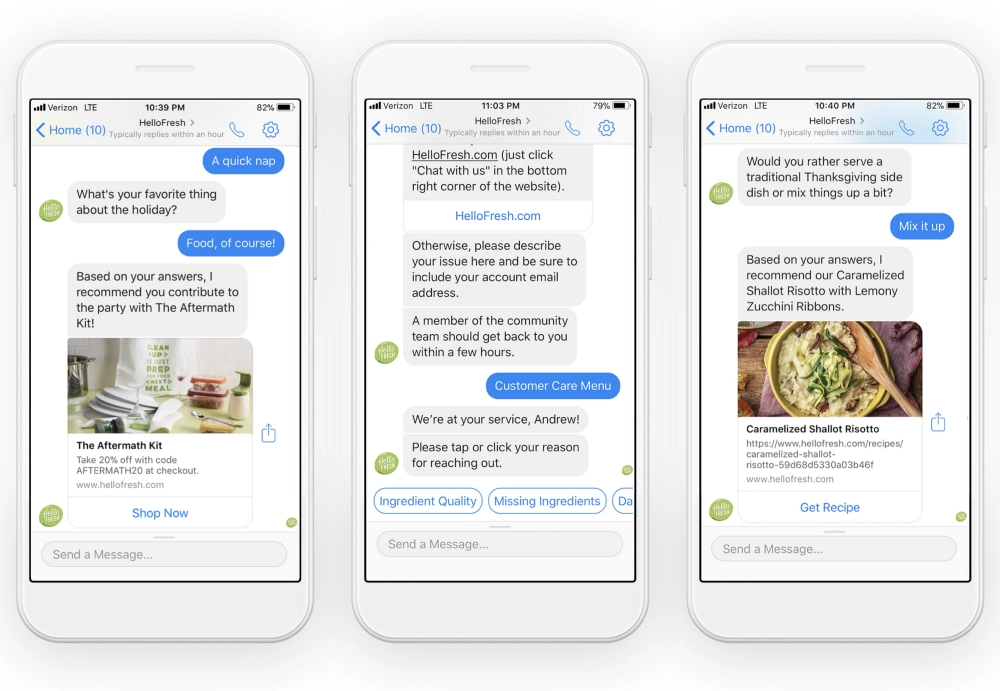
The advantages of Messenger bots for Facebook ads
Messenger bots are a compelling answer to the question of how to convert more users who click on your ads. Some key benefits of using a Messenger bot as a Facebook-ads destination include:
Bots are instant. In today’s fast-moving digital landscape, people expect answers and assistance almost instantly. Bots can provide this speed of service. As soon as a user engages with a click-to-Messenger ad, they’re directed to the bot and a conversation begins immediately. That way, there’s no lull or waiting period where the prospect can lose interest.
Bots can provide a personalized experience. Of course, sending all prospects from an ad to the same, single landing page doesn’t make for a very customized experience. Bots, however, can be set up to greet the prospect by name, and ask questions to get to know their needs or tastes. That way, the bot can provide more tailored information, or show products and offers that relate to the user specifically.
Bots exist in a familiar, simple interface. The Messenger interface where these bots exist always offers the same, easy-to-navigate experience—one which most users are already familiar with. Plus, Messenger is exceedingly mobile friendly. You’ll never have to worry about slow load times or jumbled layouts when your bot is accessed from a smartphone. Finally, a Messenger bot means fewer creative factors to worry about. Since you don’t have to choose fonts, layout, and colors, you can put all your focus on creating quality content.
Bots gather user data easily. First, bots automatically have access to basic information from a subscriber’s Facebook profile. For any additional details your business needs, the bot can gather it in an engaging way using questions sent one by one. This method generally offers less friction in the conversion process—and less of a chance for user overwhelm than if you asked them to enter details into a form themselves.
Bots are innovative tools. Chatbots are still relatively new on the scene of Facebook marketing. The incorrect perception that they can only be built from scratch, with code, is unfortunately widespread, and prevents many businesses from trying them out. So by offering a pleasant, easy interaction with your prospects through a bot, you’ll stand out as an innovative company dedicated to providing the best customer experience possible.
How to choose between a landing page and a Messenger bot
When it comes to selecting a destination for your Facebook ads, both landing pages and bots can produce impressive results when used correctly. Here are a few ideas to help you decide which is right for your brand.
Landing pages work well for businesses that sell complex or especially technical products and services. In cases like these, it’s your job to educate the visitor about the problem and the details of your solution before they take an action like booking a demo or making a more expensive purchase. Landing pages allow you to present a large amount of information in a clear and coherent way, since you can control all elements of the design and layout.
Chatbots work well for any business case where the information the prospect needs to know before opting in or signing up can be clearly conveyed in a succinct, conversational style. For a newsletter opt-in, event registration, or a giveaway, for example, sending a user to a bot rather than a static landing page will make the transaction simpler and much quicker. Whereas there may be a delay between when a user fills out a landing-page form and when the business reaches out to them, a bot can provide service instantly. Plus, thanks to buttons and quick replies, gathering information is easy—the user may not even need to type at all. Finally, once the user responds to the bot, they’re considered a subscriber. This means your business can message them again within a 24-hour window, or at any time in the future using sponsored messages.
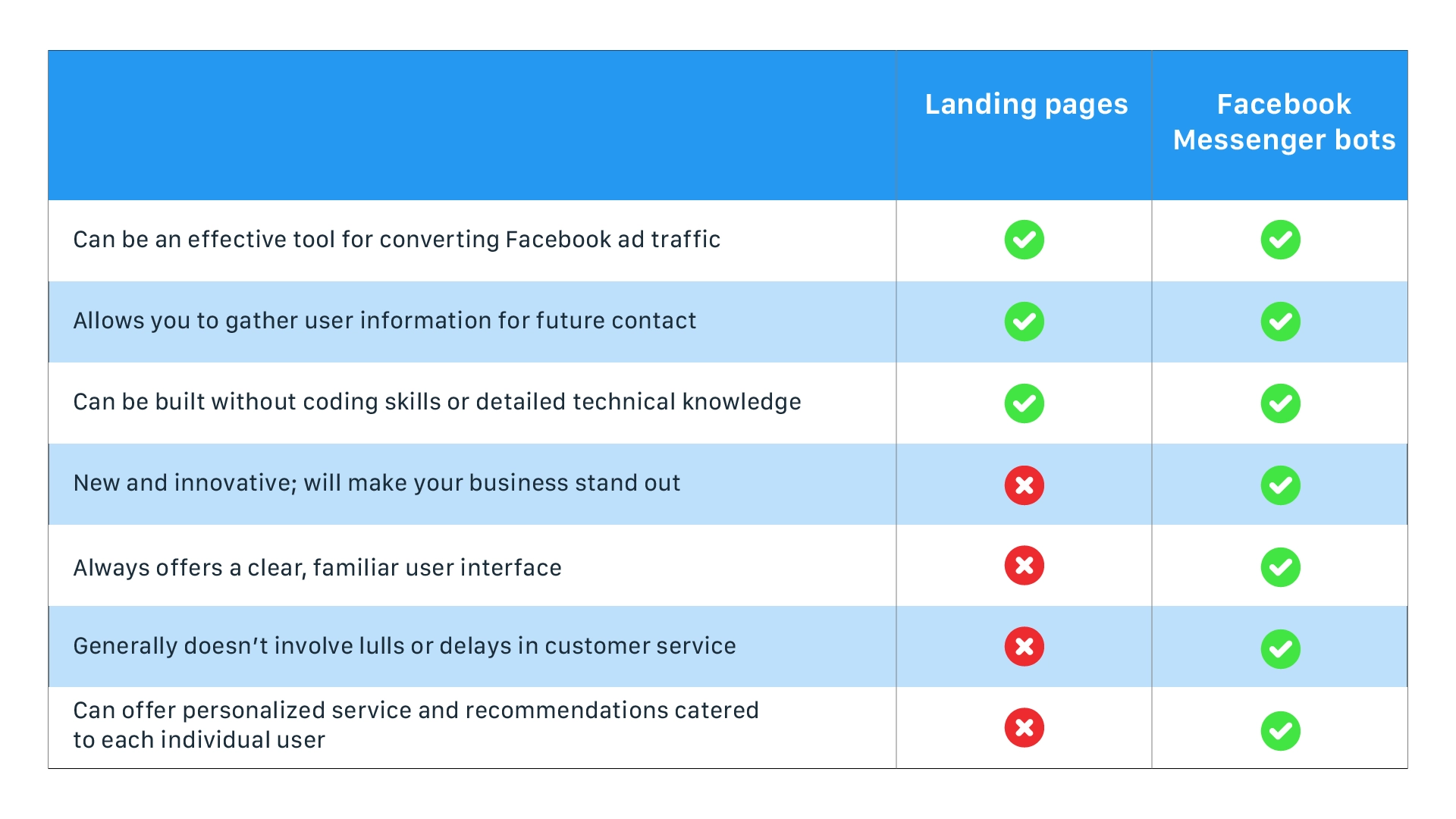
In the end, it’s up to you to carefully consider your unique use case and choose the right Facebook ads destination for your brand. As with most business tools, experimentation is crucial to discovering which will work best for your specific situation. That’s why it’s generally a good idea to split test your next campaign to see which ads destination performs better. You can use Chatfuel’s A/B testing plugin for this. Simply divide the flow so that A leads customers to a landing page, and B leads them to a flow within a chatbot. Then, you can focus on whichever method produced the most conversions.
Or, it could be that both solutions have a place in your Facebook ads strategy, depending on the campaign and the stage. For example, you could use a landing page to explain the benefits of and sell a certain product.
How to build a landing page
There’s a huge amount of helpful resources out there on how to create a landing page for Facebook ads. Learn about the elements of high-converting landing pages, or find a template and a step-by-step guide for building one yourself.
How to build a Facebook Messenger bot
If you decide a Messenger bot is the right ads destination for your brand, but have never built one yourself, don’t worry! Some businesses haven’t yet explored bots because they may seem too intimidating or complicated. The truth is, however, that it takes no more technical knowledge to create a simple bot than it does a simple landing page. With the right platform, #AnyoneCanBuildABot!
To help you start building your first bot for free with Chatfuel, we offer lots of helpful resources:
Take our free Udemy course to learn everything you need to know about building your first bot.
Get a head start with a template to help you design a bot for a specific use case, or take advantage of a pre-built flow to help you create its content.
Find detailed information on how to set up various bot features in our help documentation.
Get tips and advice from fellow bot builders across industries in our Facebook community.
Ready to dive in?
If you’ve decided that a chatbot is the right destination for your business’s Facebook ads, get started today! Sign up with Chatfuel for free and build a chatbot for your business.
